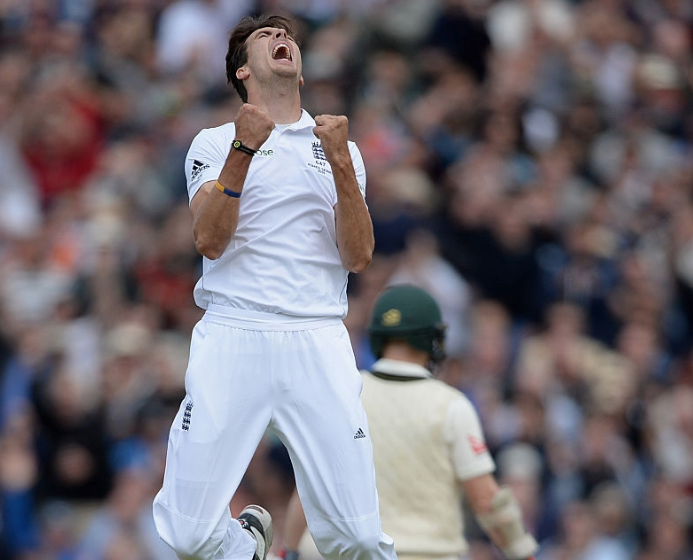Test match cricket is being played at a furious pace – a pace that leaves the Test-format doubters needing to rethink their philosophy.
The signs were there when New Zealand and England contested their two-match series in May-June. The scores were big but the run-rates high, allowing both matches to be completed. In all, 26 sixes were struck, and Ben Stokes smashed the quickest ever century at Lord’s.
Then there’s the Ashes. The way the momentum has swung in the series is enticing enough, but the velocity at which it is being played, proves that Test cricket is far from at its breaking point.
The first match was over in four days, the second was done in just over three, while the third was almost finished in two. The job is being done quickly; each match has been a thrashing, yet it’s 2-1, not 3-0. It’s 2-1 to England, the side that lost 5-0 Down Under 18 months ago.
Chris Rogers, a quiet and careful accumulator of runs with a career strike-rate of under 50 going into the series, has been scoring at 60. Joe Root had a similar career strike-rate, yet his recent strike-rate reads 72.75. David Warner pillaged the joint-quickest Ashes fifty of all time on Thursday – this from an opening batsman with his team chasing the game.
The traditionalists will argue it is a disgrace that the future of the five-day format should even come under scrutiny, but like it or not, the game is constantly changing. Day/night Tests and demands for four-day encounters are simply attempts to invigorate the game – put more bums on seats and get more families watching in front of the TV. But the players contesting the Ashes are clearly heeding the calls. The manner in which they are playing is fast and enterprising, and it’s just a matter of time before everyone else catches on.
From the muscles of Mitchell, to the the belligerent tattoos of Ben. The paddle sweeps of Steve to the jovial, care-free attitude of Joe. This is familiar to the T20 fraternity, but it’s becoming part and parcel of the Ashes. T20 cricket has had a large role to play in shifting the very best player’s mindsets. Rank medium pace and casual slogging can get you an IPL contract, but you need genuine quality to receive an invite into the Test arena.
Yes, it has at times been sloppy. Steve Smith walked for single figures on both occasions, the second thanks to a mistimed slog. But these are the risks you take in today’s era of the game. This is the world’s No 1 batsman we’re talking about after all. He plundered 273 runs in the previous match.
Jonny Bairstow is back in the England setup, and the justification for his recall is not just his County average this season, but his strike-rate too. The two now go hand-in-hand. Alex Hales is reportedly next in line for a Test berth. Yes, he has scored County Cricket centuries this season, but so has everyone else. Hales’s strike-rate when he scored 236 for Nottinghamshire against Yorkshire back in April however, read 83.68, setting him apart.
This is the way the game is progressing – it’s furious and flashy, but it’s still being competed at a professional and entertaining level. If this is the key to preserving the futures of Tests, then count me in.







